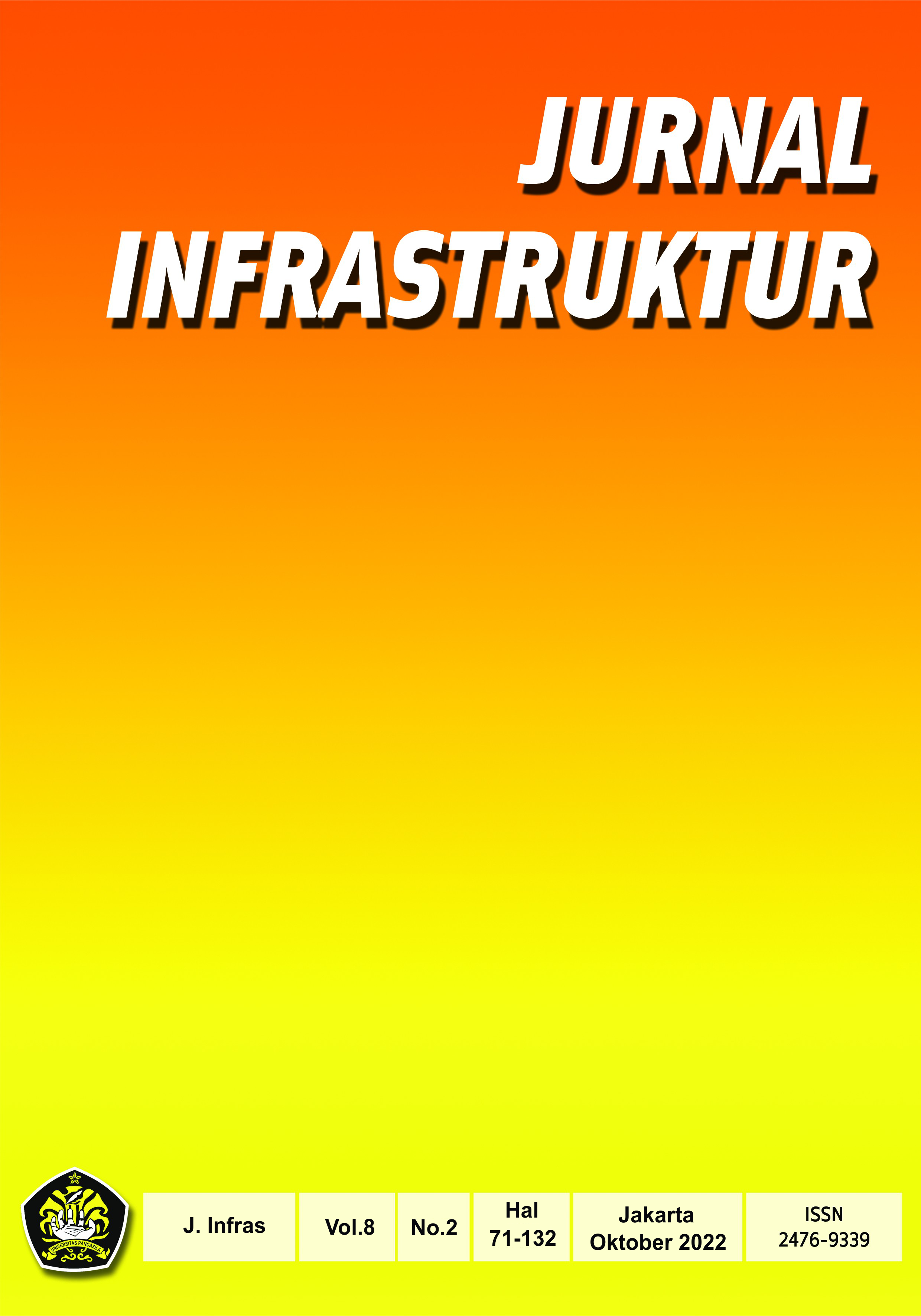COMPARISON OF COST AND TIME OF FLOOR SLAB WORKS ON CONVENTIONAL AND BUBBLE DECK SLAB METHODS
Case Study of Central Control Building, Muara Tawar Power Plant Project, Bekasi, West Java
DOI:
https://doi.org/10.35814/infrastruktur.v8i2.4031Keywords:
Floor Slab, Bubble Deck Slab, Cost Comparison, Time ComparisonAbstract
Floor slab is one of the most important structure members in a building and one of the largest members consuming concrete. Conventional floor slab has been used for years and has disadvantages that can be improved with alternate methods. There is lot of alternative methods that have been used in the construction world such as precast slab, half precast, hollow core slab, and many more. One of the alternative methods is bubble deck slab. The spherical hollow reinforced concrete slab has been patented named Bubble Deck Slab is a method that removes concrete from the center part of a slab which doesn't do any structure functional, so it can reduce the dead load significantly. High-density polyethylene hollow sphere is used to replace the ineffective part of the slab, so it reduces the dead load and increases efficiency. With the HDPE ball substitution, there will be differences in cost and time compared to the conventional method. This research is taking the case research in Central Control Building of Power Plant Muara Tawar Project with quantitative method approach. The analysis is calculating the budget plan and scheduling with Microsoft Project. After the analysis, there is differences in cost and time between the methods. The bubble deck slab method has the advantages which have the cheaper cost of IDR. 142,128,506.44 or 14,442% and 1 day or 3,846% faster compared to the conventional. Even so, the conventional method is still the first choice because the very common methods in Indonesia and the ease of execution.
References
W. Jigme and S. Q. Adenan. (2017). "Cost Comparison Between Conventional Concrete Slab and Bubble Deck Slab," Infrastructure University Kuala Lumpur, Kuala Lumpur.
N. Fatma and V. Chandrakar. (2018)."To Research Comparison between Conventional Slab and Bubble Deck Slab," International Advanced Research Journal in Science, Engineering and Technology, pp. 70-76.
K. S. Elliott. (2017). Precast Concrete Structures Second Edition, United State: Taylor & Francis Group.
A. Budiawan. (2018) "Perbandingan Biaya Dan Waktu Pekerjaan Pelat Lantai Konvensional Dengan Pelat Lantai Pracetak Flyslab," Universitas Islam Indonesia, Yogyakarta.
A. Churakov. (2014) "Biaxial Hollow Slab with Innovative Types of Voids," Construction of Unique Buildings and Structures, vol. 6, no. 21, pp. 70-88.
R. R. Vakil and M. M. Nilesh. (2017). "Comparative Research of Bubble Deck Slab and Solid Deck Slab - A Review," International Journal of Advance Research in Science and Engineering (IJARSE), vol. 6, no. 10, pp. 383-392.
M. S. and N. S. (2017). "Bubble Deck," International Journal for Researh in Applied Science& Engineering Technology (IJRASET), vol. 5, no. III, pp. 580-588.
M. S. Mushfiq, S. Saini and N. Rajoria. 2017. "Experimental Research On Bubble Deck Slab," International Research Journal of Engineering and Technology (IRJET), vol. 04, no. 05, pp. 1000-1004.
BubbleDeck United Kingdom. (2008) Technical Manual & Documents, United Kingdom: BubbleDeck United Kingdom, 2008
Alibaba. (2021) "25-150mm HDPE Sun Shade Ball Plastic Hollow Float Ball," Guangzhou Chemxin Environment Material Co., Ltd., [Online]. Available: https://www.alibaba.com/. [Accessed 28 Desember 2021]
Direktorat Jendral Bina Marga. (2016). Lampiran Peraturan Menteri Pekerjaan Umum dan Perumahan Rakyat Nomor: 28/PRT/M/2016, PUPR.














